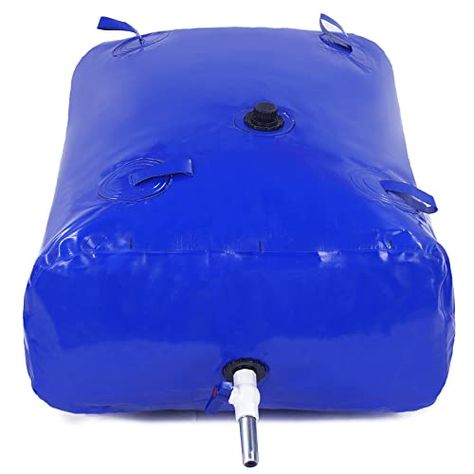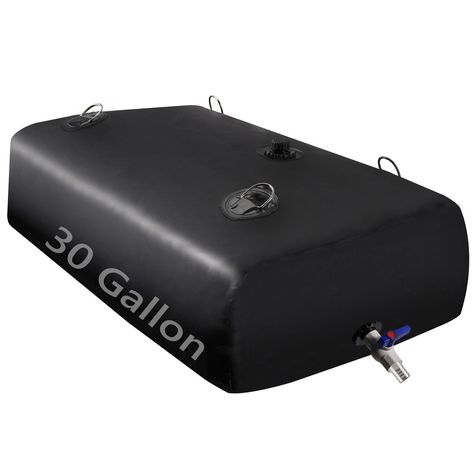Bladder and Folding Tanks: The Ultimate Solution for Temporary Storage Needs
Table of Contents
-
Introduction
-
What Are Bladder and Folding Tanks?
-
Key Benefits of Bladder and Folding Tanks
-
Lightweight and Portable
-
Quick and Easy Installation
-
Versatility in Applications
-
Cost-Effectiveness
-
Durability and Longevity
-
Space-Efficiency
-
Safety and Contamination Control
-
-
Applications of Bladder and Folding Tanks
-
Comparison with Other Tank Types
-
Vs. Fiberglass Tanks
-
Vs. Steel Tanks
-
Vs. Concrete Tanks
-
-
Maintenance and Longevity
-
Choosing the Right Bladder or Folding Tank
-
Conclusion
-
Recommended Visuals
-
Benefits Summary Table
Introduction
In today’s dynamic world, the need for flexible and efficient storage solutions is paramount. Whether it’s for emergency water supply, temporary fuel storage, or agricultural applications, bladder and folding tanks provide a versatile and practical alternative to traditional rigid tanks. These innovative storage solutions are lightweight, durable, and designed for easy transport and installation, making them ideal for temporary storage needs. This blog post explores the benefits, applications, and considerations of bladder and folding tanks, highlighting why they are a top choice for various industries.

What Are Bladder and Folding Tanks?
Bladder and folding tanks, also known as flexible, collapsible, or pillow tanks, are storage containers crafted from durable materials such as rubber, plastic, PVC, or TPU (thermoplastic polyurethane). Unlike rigid tanks made from fiberglass, steel, or concrete, these tanks can be folded or rolled up when empty, significantly reducing storage space. This flexibility makes them perfect for scenarios where space is limited or storage needs are temporary.
The construction of these tanks typically involves a multi-layered design to ensure strength and durability. The inner layer is often made from food-grade materials to ensure safety for storing potable water, while the outer layers protect against UV rays, punctures, abrasions, and extreme temperatures. This robust design enhances the tank’s longevity and ensures the stored liquid remains uncontaminated (Tanks Direct).
Key Benefits of Bladder and Folding Tanks
Bladder and folding tanks offer a unique combination of features that make them ideal for temporary storage. Below are the key benefits that set them apart:
Lightweight and Portable
One of the standout advantages of bladder and folding tanks is their lightweight nature. When empty, these tanks can be easily rolled up or folded, making them highly portable. This is particularly beneficial in remote locations or areas with limited access, where transporting heavy tanks like steel or concrete would be challenging. For example, a 264-gallon portable water tank from VEVOR weighs only a fraction of its capacity when empty, allowing it to be carried by hand or with minimal equipment.
Quick and Easy Installation
Setting up a bladder or folding tank is straightforward and can be completed in minutes. This rapid deployment is critical in emergency situations, such as natural disasters, where immediate access to water or other liquids is essential. The ease of installation reduces labor costs and time, making these tanks a practical choice for urgent needs. For instance, Clarion Municipal notes that their folding frame tanks require only a flat, debris-free surface for quick setup.
Versatility in Applications
Bladder and folding tanks are incredibly versatile, capable of storing a wide range of liquids, including potable water, wastewater, chemicals, fuels, and more. Their adaptability makes them suitable for diverse industries, from agriculture and construction to military and disaster relief. Interstate Products highlights their use for potable water, grey water, fire suppression, and irrigation, showcasing their broad applicability.
Cost-Effectiveness
While the initial cost of bladder and folding tanks varies, their overall cost-effectiveness is significant. These tanks are reusable, require minimal maintenance, and their space-saving design reduces storage and transport costs. For example, VEVOR offers portable water tanks starting at $37.99 for a 29.9-gallon capacity, providing an affordable solution for temporary storage needs.
Durability and Longevity
Despite their flexible nature, bladder and folding tanks are built to last. Constructed from high-quality materials like PVC, TPU, or rubber, they withstand harsh environmental conditions, including temperatures from -30°C to +70°C, UV exposure, and punctures. With proper care, these tanks can provide reliable service for 5 to 10 years or more. Tanks Direct reports that their bladder tanks have an operational life of up to 10 years.
Space-Efficiency
When not in use, these tanks collapse to a fraction of their filled size, saving valuable storage space. This feature is advantageous for businesses or individuals with limited storage areas or those who frequently transport tanks. A 250,000-liter bladder tank from Tanks Direct can be rolled up and stored compactly when empty.
Safety and Contamination Control
The sealed design of bladder tanks minimizes the risk of contamination, making them ideal for storing potable water. Tanks made from FDA-approved or NSF 61-compliant materials ensure water safety for consumption. AIRE Environmental emphasizes that their potable water bladders meet strict safety standards, preventing microbial growth and maintaining water purity.

Applications of Bladder and Folding Tanks
Bladder and folding tanks are used across various industries and scenarios due to their flexibility and ease of deployment. Common applications include:
-
Emergency Water Storage: Rapidly deployed to provide water for drinking, sanitation, or firefighting during natural disasters or emergencies.
-
Firefighting: Used as mobile water storage units, transportable to fire scenes where hydrants are unavailable (Clarion Municipal).
-
Agriculture: Store irrigation water, fertilizers, or liquid manure, with portability allowing easy relocation on farms.
-
Construction Sites: Provide water for concrete mixing, dust suppression, or worker hydration in remote locations.
-
Military and Disaster Relief: Support field operations by storing fuel, water, or other liquids with quick setup times.
-
Rainwater Collection: Offer a cost-effective solution for homeowners and businesses harvesting rainwater.
-
Temporary Fuel Storage: Used in oil and gas industries for storing fuels or chemicals at remote sites (Interstate Products).
Comparison with Other Tank Types
To understand the unique advantages of bladder and folding tanks, it’s helpful to compare them with other tank types:
Vs. Fiberglass Tanks
-
Portability: Bladder tanks are more portable and easier to set up for temporary needs, while fiberglass tanks are better for permanent installations (Water Storage Tanks).
-
Installation: Fiberglass tanks require more time and effort to install, whereas bladder tanks deploy in minutes.
-
Cost: Bladder tanks are generally more cost-effective for temporary use due to reusability and lower maintenance.
Vs. Steel Tanks
-
Corrosion Resistance: Bladder tanks resist corrosion, especially for chemicals or saltwater, unlike steel tanks, which may rust.
-
Weight: Steel tanks are heavier and harder to transport, making bladder tanks preferable for mobility.
Vs. Concrete Tanks
-
Flexibility: Concrete tanks are fixed and immovable, while bladder tanks can be relocated as needed.
-
Setup Time: Concrete tanks require lengthy construction, unsuitable for temporary storage.
Maintenance and Longevity
Maintaining bladder and folding tanks is straightforward. Regular cleaning with water and mild soap, along with periodic inspections for leaks or damage, keeps them in good condition. Many manufacturers provide repair kits for minor punctures or tears, extending the tank’s life without significant expense (Clarion Municipal). Proper storage in a cool, dry place away from sunlight preserves their integrity. With diligent care, these tanks can last 5 to 10 years or longer.
Choosing the Right Bladder or Folding Tank
Selecting the appropriate bladder or folding tank involves considering several factors:
-
Capacity: Choose a size that meets your storage needs, ranging from 100 gallons to 250,000 liters.
-
Material: Ensure compatibility with the stored liquid, using FDA-approved materials for potable water.
-
Application: Match the tank to the use case, such as firefighting or agriculture, considering specific fittings or durability requirements.
-
Accessories: Opt for fittings like valves, hoses, or pumps as needed (Tanks Direct).
-
Standards and Certifications: Verify compliance with standards like NSF 61 for potable water or industry-specific regulations.
Conclusion
Bladder and folding tanks offer a revolutionary approach to temporary storage, combining flexibility, durability, and convenience. Their lightweight design, rapid deployment, and versatility make them invaluable for emergency response, agriculture, construction, and more. By choosing these tanks, you invest in a cost-effective, reusable, and environmentally friendly solution that meets diverse storage needs. Whether you’re preparing for emergencies or managing resources in remote locations, bladder and folding tanks provide a reliable and efficient option.